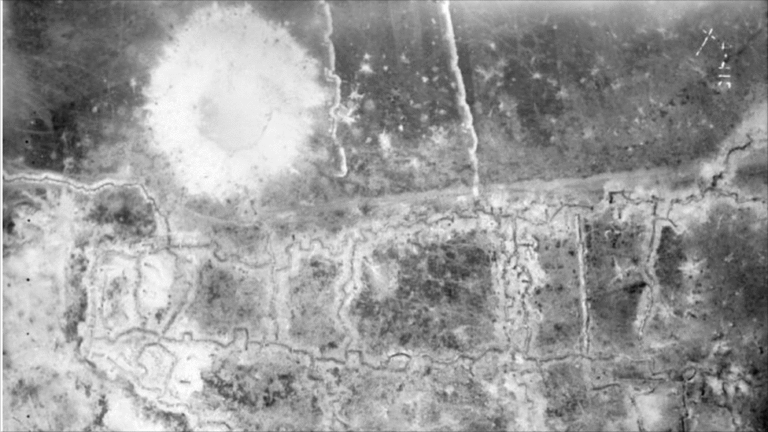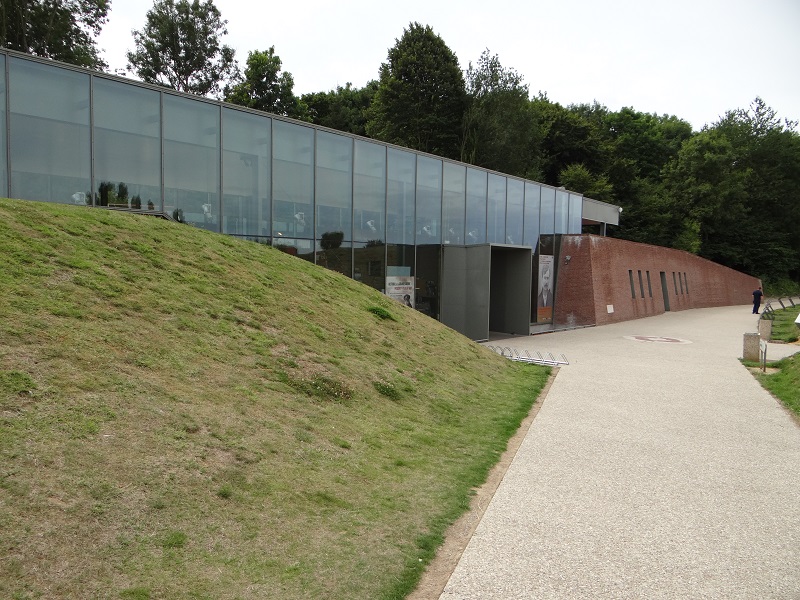This self guided tour of WWI Somme Battlefields can be done in 1-3 days in the area around Albert, France.
The Somme is a river which runs through the northern part of France in the Picardy region. This self guided tour of WWI Somme battlefields will take you to some of the areas which saw the heaviest fighting, as well as the museums and memorials that help provide additional depth and context. In addition to the sites I’ve listed, you’ll pass a number of cemeteries and other sites related to the war, so plan to take your time and stop at your leisure.
Over By Christmas
The “Great War” began in the summer of 1914 and the initial assumption was that the war would be over by Christmas. Not only was it NOT over by then, but it only got worse, pulling in combatants from all over the world. Fighting in the Somme area began the very first month of the war, as this was one of the first regions Germany encountered after their march through Belgium in 1914 on their way to capture Paris and fighting was fierce.
By 1916 everyone was dug in, literally – trenches crisscrossed the land for miles forming intricate defenses for both sides. The Allies were planning an offensive in the Somme region to try and break through the front lines but plans were moved up when Germany attacked at Verdun, France in February 1916 and a diversion was needed to try and relieve the immense pressure being put on Verdun.
The Battle Begins: 1 July 1916
Led mostly by the British, as the French were focused on defending Verdun, an artillery bombardment launched more than 1.5 million shells into the German lines for a solid week before the attack. The German trenches were well protected, however, and the bombardment did not decimate the German lines as much as expected. British troops did not learn this until they began the frontal assault and came under heavy fire. The first day of the Somme returned nearly 60,000 British casualties, making it the single most deadly day in British war history even today.
Minutes before Allied troops were sent from their trenches to attack on July 1, 1916, a series of explosions were detonated. British miners, many from Wales, Australia and New Zeland (heavy mining countries at the time) had dug beneath German lines and planted thousands of pounds of explosives beneath German positions all along the front.
Self Guided Tour of WWI Somme Battlefields:

Somme 1916 Museum, Albert
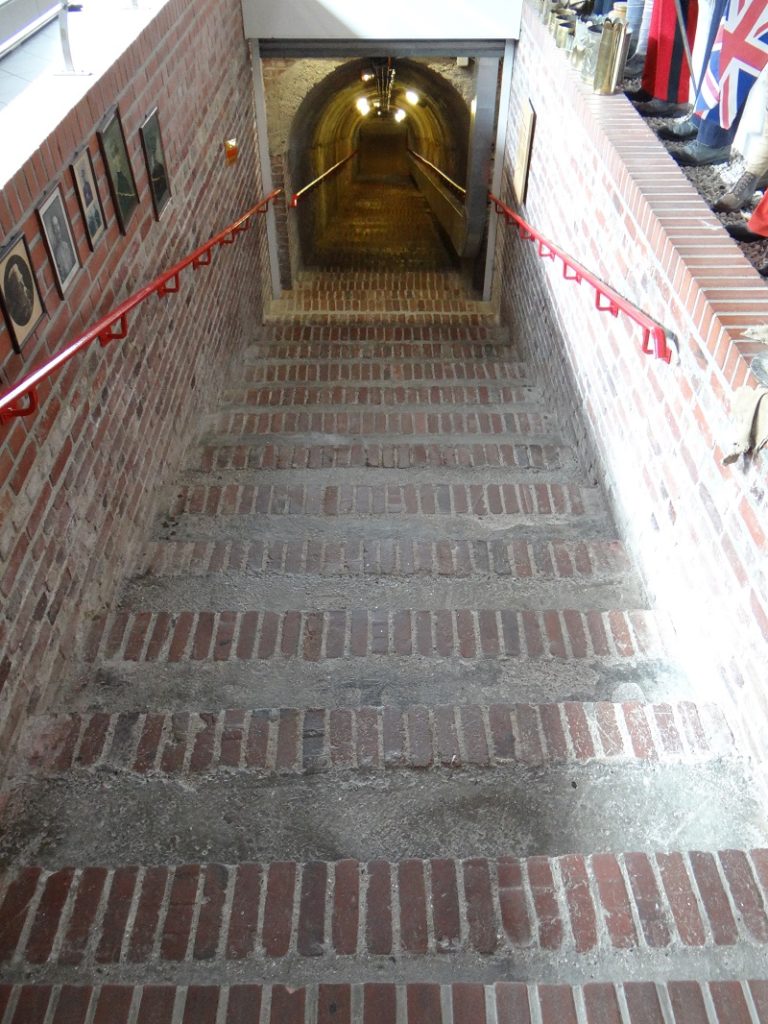

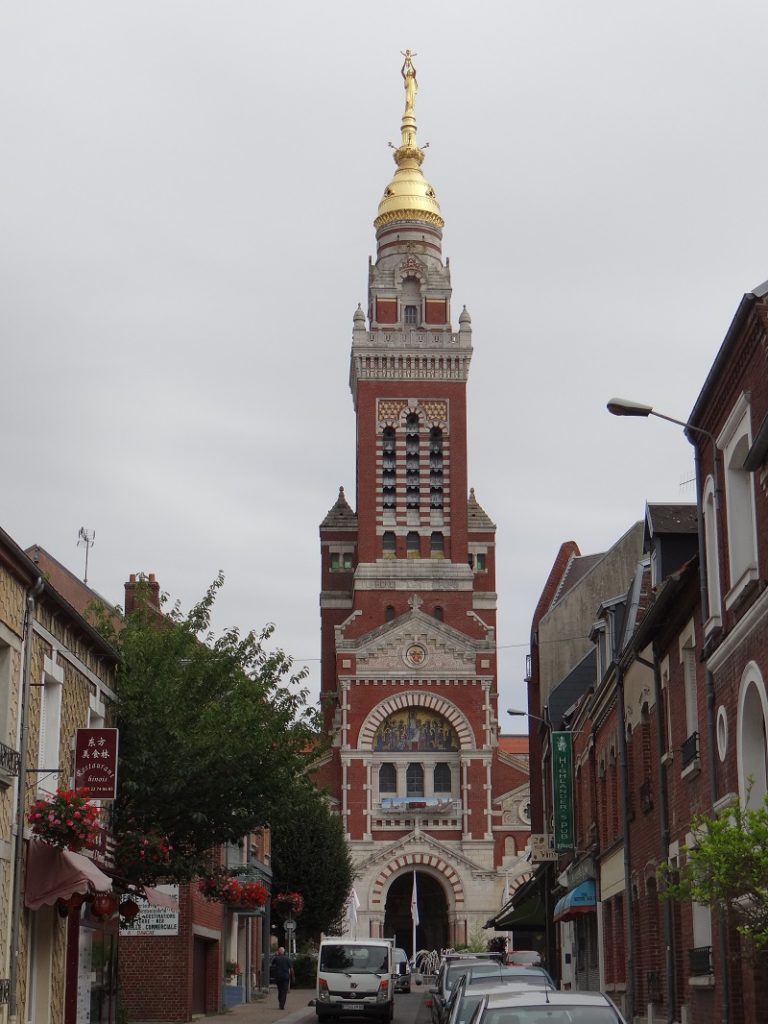
The first stop on this self guided tour of the WWI Somme Battlefields is in the town of Albert, France to see the Somme 1916 Museum.
This museum is a great place to get a sense of what the Somme was like in WWI to set the stage for the rest of the tour. The Museum itself is mostly underground, so you start off by taking a long staircase down, which really creates a sense of being “in the trenches”.
It’s a great museum, with artefacts, informative panels, audio and video experiences that you can go through quickly to get a sense of the Battle or spend a day taking it all in before visiting the sites yourself. Depending on when you finish at the museum, you may want to grab something to eat in Albert as the next site with cafe facilities won’t be until Thiepval.
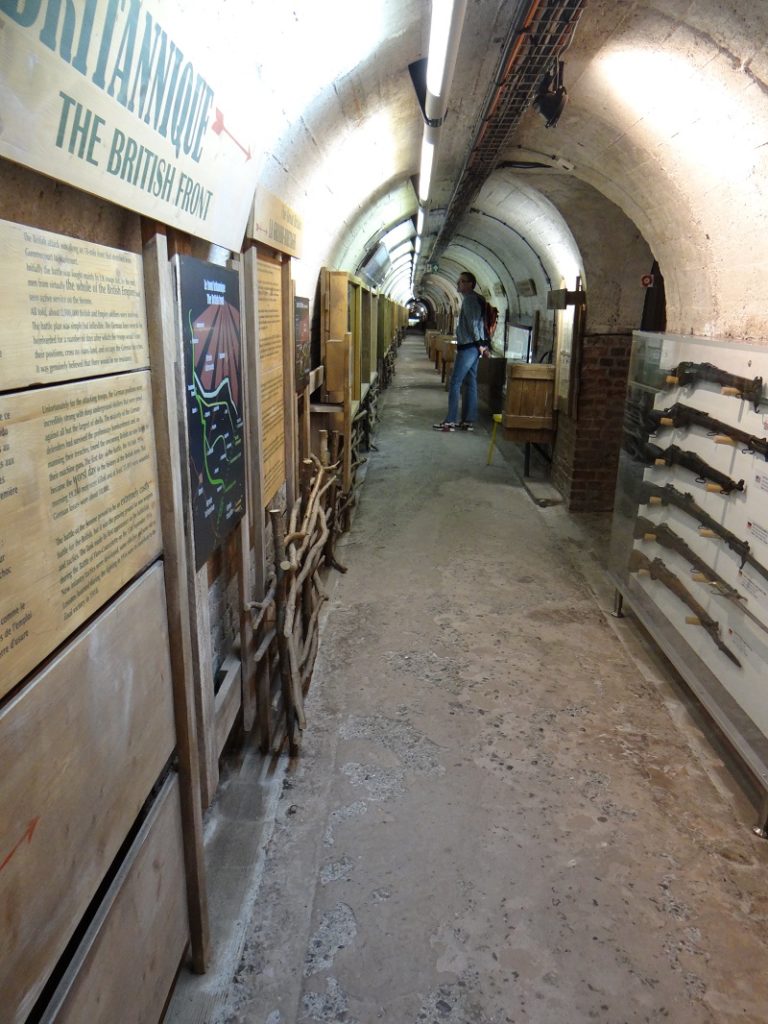
Inspired to visit the Somme 1916 Museum? There is ample parking around town and the museum is accessed at the base of the church. It’s pretty easy to find – just look for the gleaming Madonna statue! The tower sustained quite a bit of damage in the war as it was a great vantage point for artillery and reconnaissance.
Lochnagar Crater
Site #2 is about a 10 minute drive from the museum and northeast of Albert; your best route is to take the D929 to D20.
The largest explosion on the first day of the battle (and of the entire War) was near the French village of La Boisselle. Named for the British trench line it was closest to, the Lochnagar Crater was formed when 60,000 lbs of explosives was detonated at 7:28 am. The crater is 300 feet across at the top and more than 70 feet deep and it was said to have been felt as far off as London. Debris was lifted more than 400 feet in the air.

Inspired to visit Lochnagar Crater? It has been maintained as a memorial by a private organization and I highly recommend a visit. There are no facilities on site but there are informational panels along a walkway that circles the rim. Parking is a little limited but it is sobering and well worth a visit. Follow road signs to “La Grande Mine”
Mametz Wood
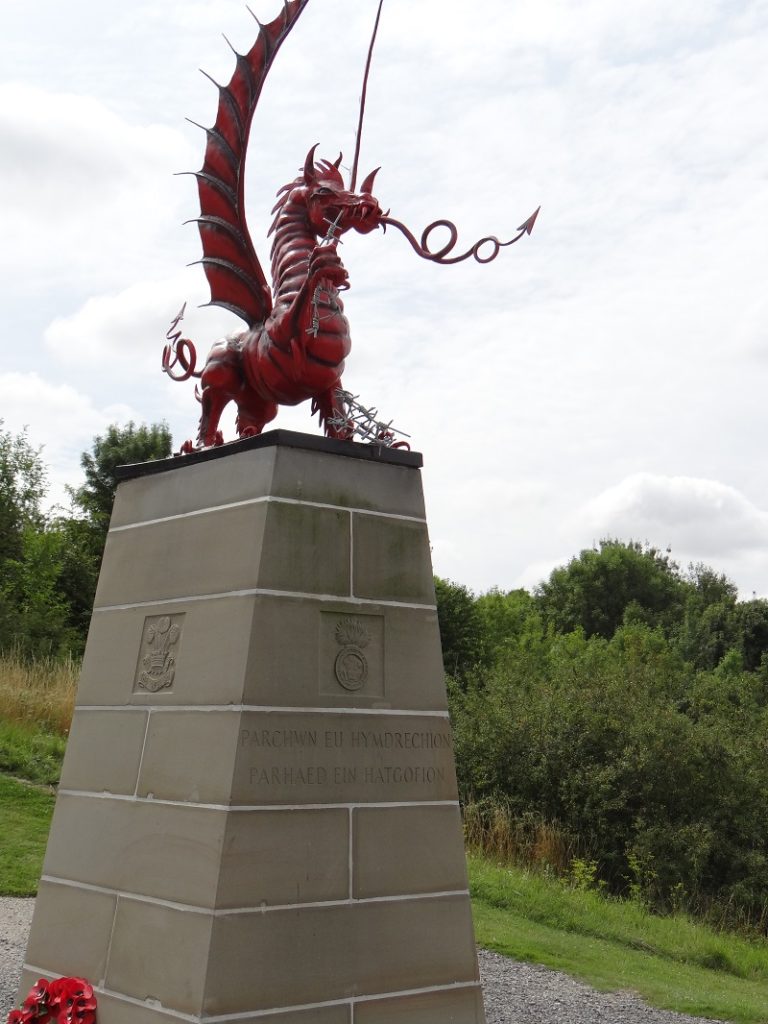
Getting to the next stop at the Welsh Division memorial is a bit tricky – it’s down a small dirt road but it is worth the trip. It’s about 10 minutes drive from the crater.
The Welsh assigned to the position were tasked with capturing a German line along the heavily wooded and fortified line along the nearby ridge on the first day of the Somme offensive in July 1916. They faced significant machine gun fire and lost several thousand men, but ultimately were able to capture the ridge.
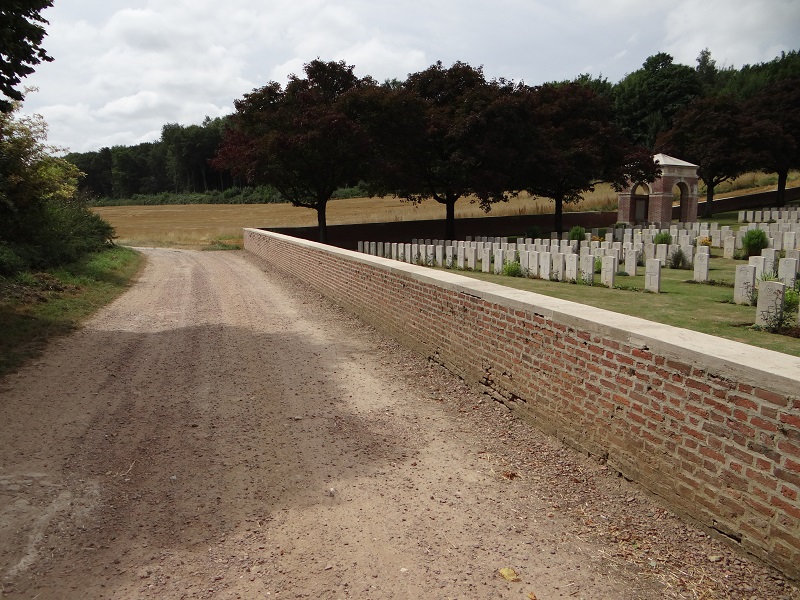
Inspired to visit Mametz Wood? The Welsh Memorial does show up on Google Maps, or you can use the gps coordinates: 50.014, 2.756. It is east of the town of Albert and the Lochnagar crater. I approached from the D20; there was a small sign for the Flatiron Copse cemetery to show where to turn.
Delville Wood

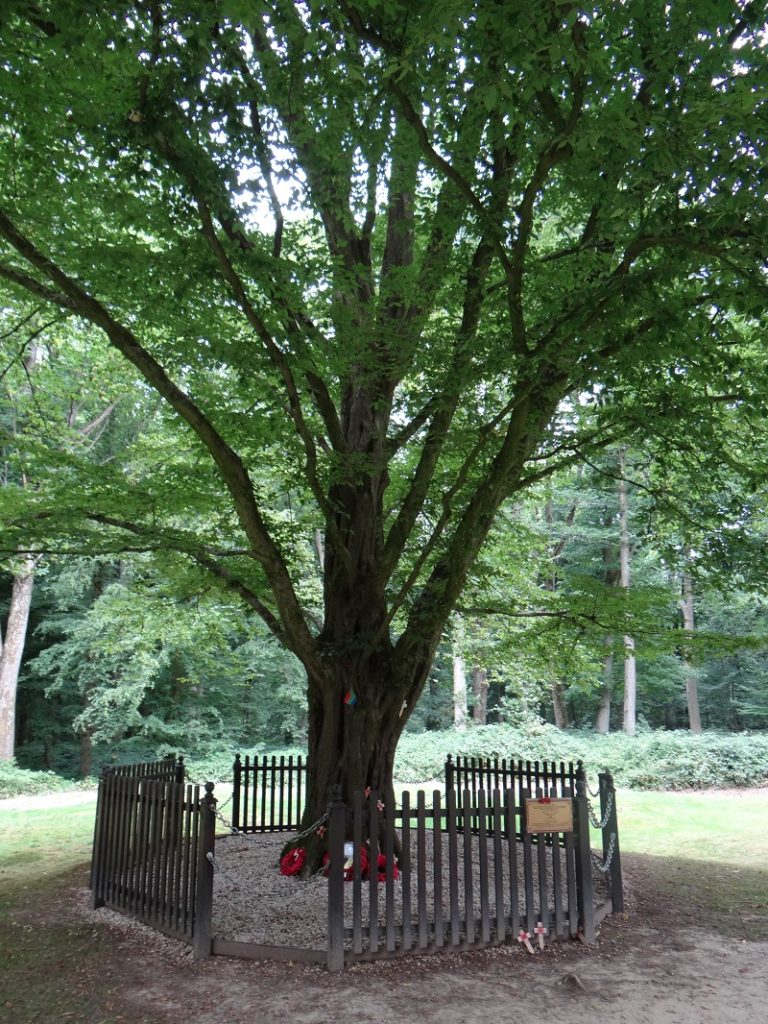
Another section along the Somme, Delville Wood was the site where South African troops were engaged to breakthrough German lines. Delville is 10 minutes from Mametz Wood just off of – you guessed it – the D20!
It’s very moving to drive past so many cemeteries some big and some small. It’s also very touching to see so many elaborate memorials to all the different countries and divisions who fought from around the world. The Delville Wood musem is no exception. It is a replica of the Castle of Good Hope in Cape Town. I like to think that the troops resting here have something to remind them of home nearby. It also commemorates South African troops who fought in WWII and other conflicts as well.
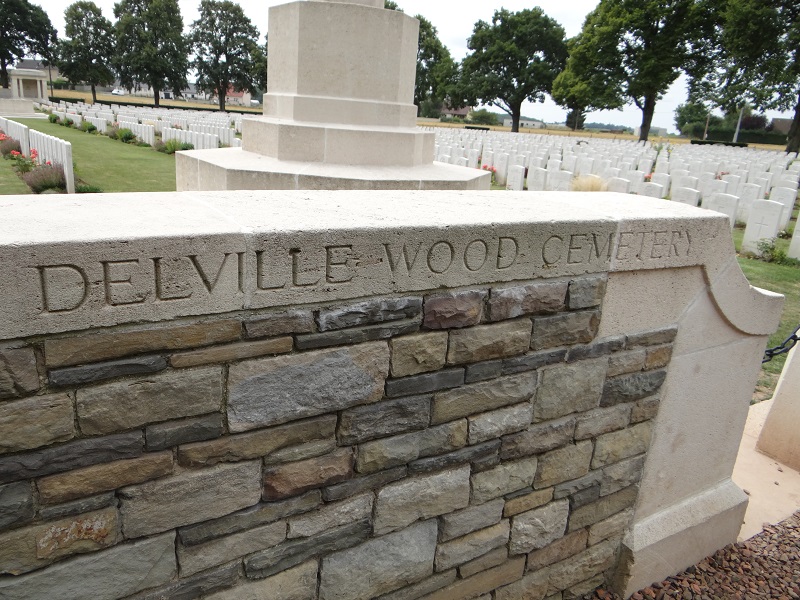
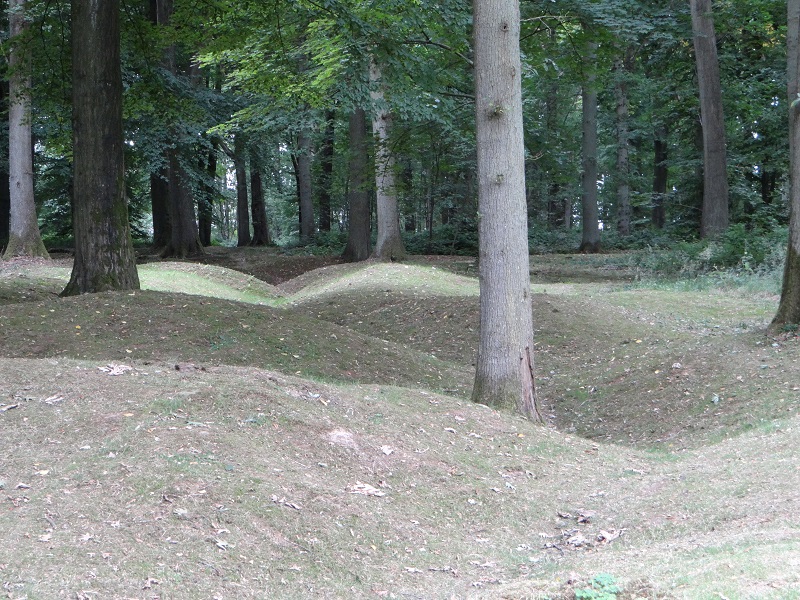
Thiepval
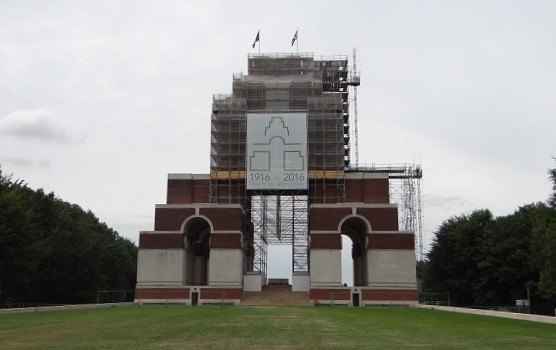
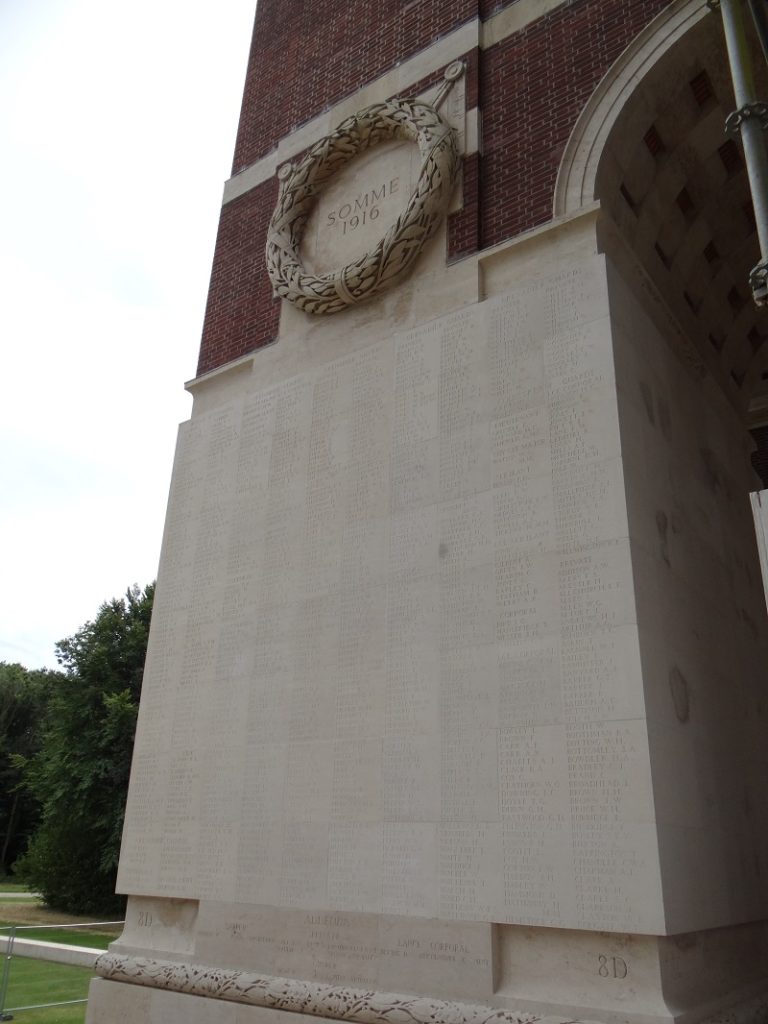
Next up on your self guided tour of WWI Somme Battlefields is the Thiepval memorial and museum, about 20 minutes drive west of Delville.
The town of Thiepval was a German stronghold that was completely leveled during the pre-attack bombardment. German troops were able to take shelter in the cellars of the town and were not wiped out in the bombardment as planned. The Battle of Thiepval occured in September 1916, when the British were finally able to capture the town.
Thiepval was selected as the site for the Memorial to the Missing, commemorating the more than 70,000 casualties of the Somme whose remains were never identified. The structure was unveiled in 1932 and was refurbished in time for a 100 year ceremony in 2016.
Ulster Memorial
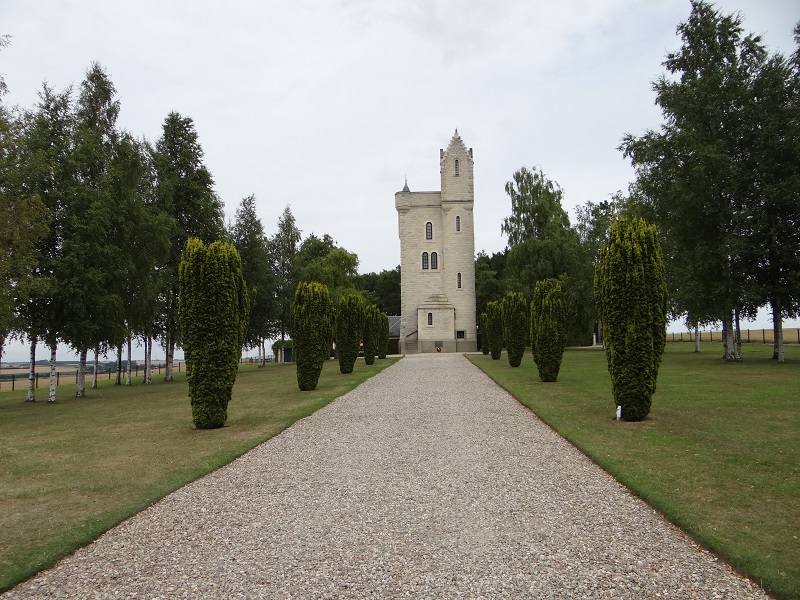
Just a few minutes drive from Thiepval is the Ulster Memorial.
This Irish memorial was modeled after Helen’s Tower in County Down where the Ulster Division troops of Northern Ireland trained prior to leaving for France at the outbreak of the war. It was one of the first memorials to go up in the area following the war and was a heavily fortified German position they were able to capture and hold despite severe counter-attacks.
There is a very nice memorial inside and a small cafe run by A lovely Irish couple. We have family in Northern Ireland and have visited several times, so we had a nice chat with them about different places in Northern Ireland!
Beaumont-Hamel Newfoundland Memorial (Canada)
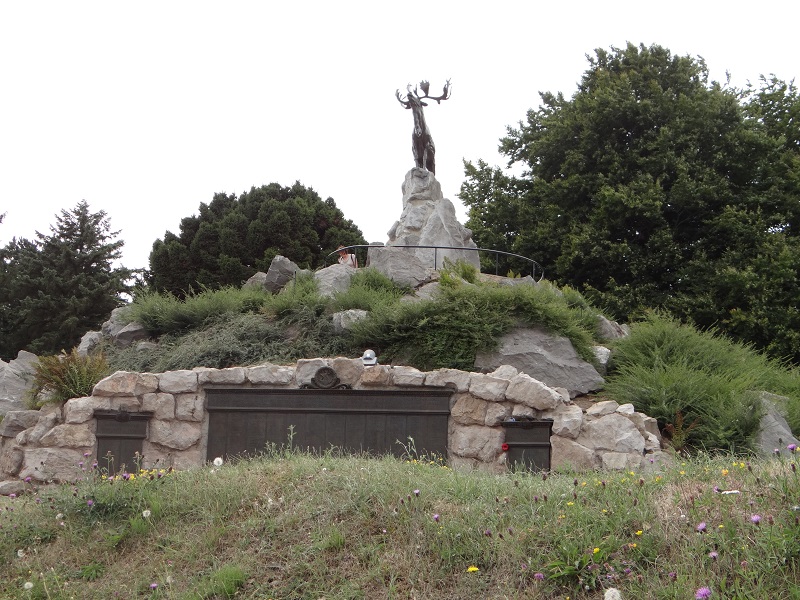
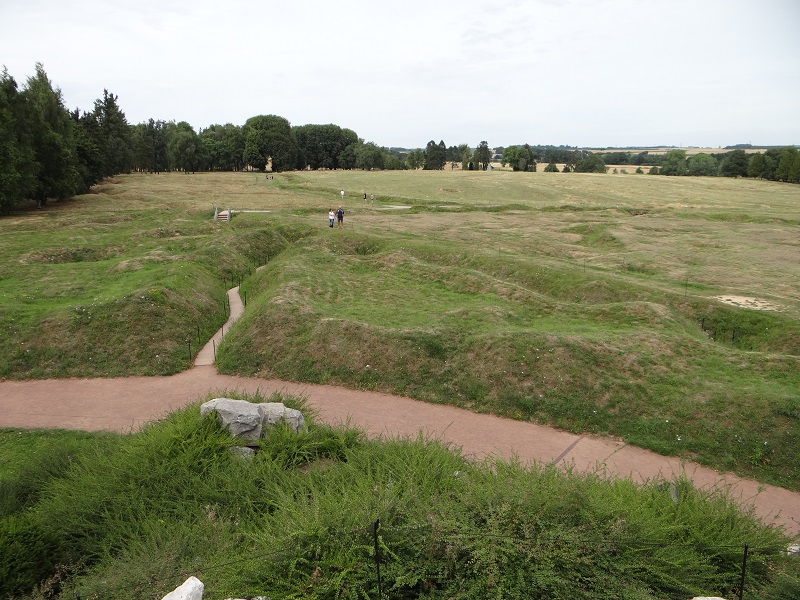
The final stop on your tour is the Canadian memorial at Beaumont-Hamel along the D73.
The Newfoundland Regiment suffered tremendous casualties on the first day of the Somme, with nearly 80% of the division wiped out. This is one of the rare Somme battlefields which has been preserved since the war, and the damage is jarring. Considering it’s been over 100 years since the fighting, to look out and see the gouges and craters all around is sobering.
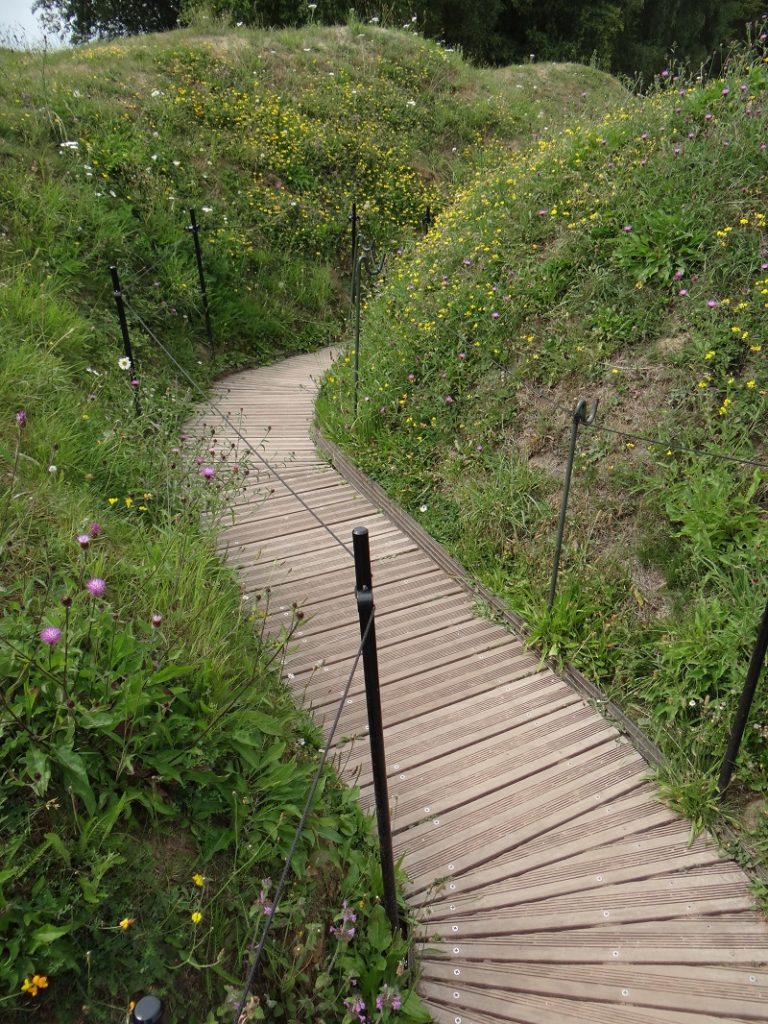
Inspired to visit the Newfoundland Memorial near Beaumont-Hamel? Be sure to check out the visitor’s center and stroll along the paved walk to the Caribou statue. The Caribou is the symbol of the Newfoundland Division and Beaumont-Hamel is one of 5 Caribou memorials in France and Belgium that were erected following the War.
Post Sources:
1914-1918 Online. International Encyclopedia of the First World War. Somme, Battles of. Accessed 19 May 2021.
Lochnagar Crater Foundation website. Accessed 19 May 2021.
wwibattlefields.co.uk website. Accessed 19 May 2021.
Somme 1916 Museum website. Accessed 19 May 2021.


